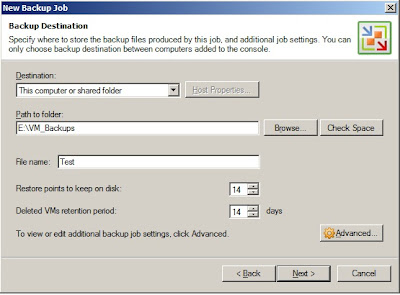Overview of SharePoint Server 2010 SP1 improvements
- Recycle bin: Lets you restore a site collection or a web that was deleted.
- Service Pack 1 will introduce long awaited Site Recycle Bin functionality that enables self-service recovery of site collections and sites. In the past IT Professionals were tasked with restoring entire databases to recover deleted site collections and sites and would generally require expensive restore environments to support the task. Now in Service Pack 1 administrators can quickly and easily recover site collections and sites accidentally deleted by their owners in a process similar to that of the Recycle Bin we have for Lists, Libraries, and Documents.
- Remote Backup Systems (RBS) and shallow copy can decrease downtime and increase efficiency by moving pointers to databases instead of moving databases.
- If you’re using Remote BLOB Storage you’ve probably realized that when moving Site Collections (Move-SPSite) between content databases each unit of unstructured data (BLOB) was round tripped (I.e. uploaded and subsequently downloaded again) serially during the move. This operation was both time consuming and resource intensive. In Service Pack 1 we reduce that overhead by enabling “shallow copy” when moving Site Collections between databases where Remote BLOB Storage is used. New Shallow Copy functionality with the Move-SPSite CmdLet enables moving site collections between content databases without moving the underlying unstructured data, i.e. Microsoft Word documents, PowerPoint Presentations, etc. significantly increasing performance and reliability for organizations using Remote BLOB Storage by simply updating the pointers to those objects in the destination content database.
- You can see which folders are taking up valuable space with the improved Storage Management feature in site settings.
- In SharePoint 2010 we removed StorMan.aspx (Storage Space Allocation) (see http://support.microsoft.com/kb/982587/EN-US) which in previous versions of SharePoint enabled granular management and insight into storage. For example, the page would show you the top 100 documents or document libraries in terms of size. With that information end users could the page to clean up content from their site(s) by deleting the large content that they no longer needed. In Service Pack 1 we are bringing back an improved StorMan.aspx, enabling users to better understand where their quota is going and act upon that information to reduce the size of their sites.
- Support for Microsoft SQL Server 2011.
- A more robust Search Host Distribution service that improves error recovery and performance during the search crawl.
- Adds backup and restore functionality to recover deleted site collections and webs.
- Cascading filters in PerformancePoint Services: Filters values can now be passed from one filter to the next.
- Support for Google Chrome - Very excited about this one!
- Improved support for Internet Explorer 9.
- Project Professional now synchronizes scheduled tasks with SharePoint task lists
The recommended order of installation is as follows:
New Sharepoint Powershell Cmdlets
Download Links for 2010 Service Pack 1
Access 2010 Runtime SP1 | |||
Access Database Engine 2010 SP1 | |||
FAST Search Server 2010 for SharePoint SP1 | |||
Groove Server 2010 SP1 | |||
Office 2010 Filter Pack SP1 | |||
Office 2010 Language Pack SP1 | |||
Office 2010 SP1 | |||
Office Language Interface Pack 2010 SP1 | |||
Office Proofing Tools 2010 SP1 | |||
Office Web Apps 2010 SP1 | |||
PowerPoint Viewer SP1 | |||
Project 2010 SP1 | |||
Project Server 2010 SP1 | |||
Search Server 2010 SP1 | |||
Server Language Pack SP1 | |||
SharePoint 2010 Indexing Connector for Documentum SP1 | |||
SharePoint Designer 2010 SP1 | |||
SharePoint Foundation 2010 Client Object Model Redistributable SP1 | |||
SharePoint Foundation 2010 Language Pack SP1 | |||
SharePoint Foundation 2010 SP1 | |||
SharePoint Server 2010 SP1 | |||
Visio 2010 SP1 | |||
Visio Viewer 2010 SP1 |

































